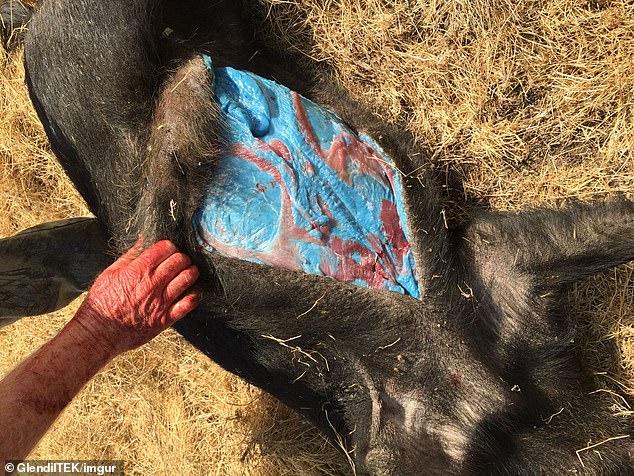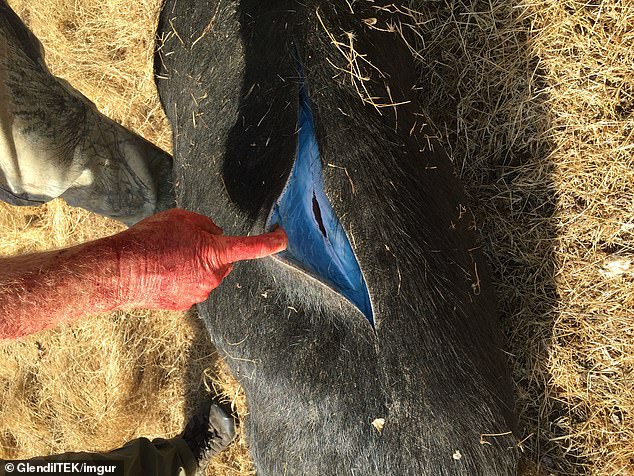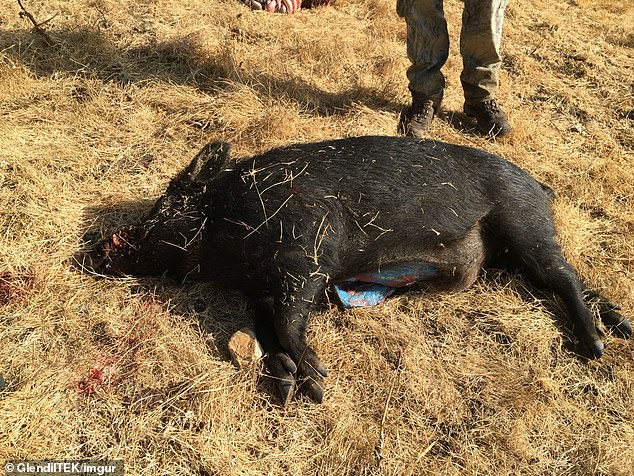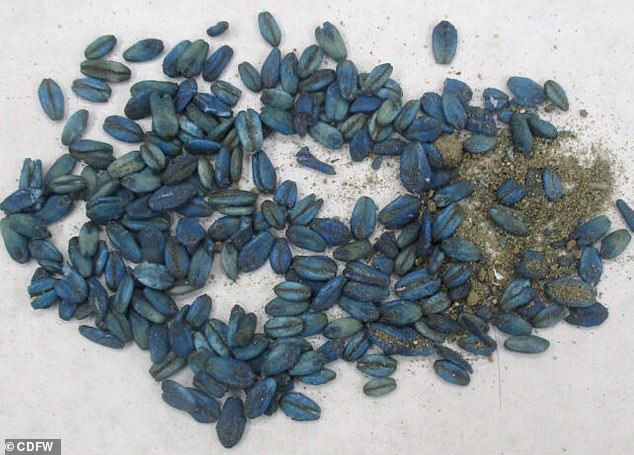Game hunters have sounded the alarm after discovering wild pigs that are turning ‘fluorescent blue’ in California.
In recent months, locals have been finding animals with bright blue flesh and fat and reporting it to local authorities.
The concerning discovery has left people baffled, with some saying they are ‘at a loss’ over what might have caused it.
‘I’m not talking about a little blue,’ Dan Burton, owner of Urban Trapping Wildlife Control in Salinas, told the Los Angeles Times.
‘I’m talking about neon blue, blueberry blue.’
Officials have now warned people not to consume the tainted meat over concerns the blue flesh is a sign the animal may have consumed poison.
An investigation found the dramatic colour was likely caused by diphacinone, a dyed rodenticide commonly used by farmers and companies to control the population of rats, mice and squirrels.
And they said the effects may even extend to other species including deer, bear and geese.

Locals have been finding pigs with bright blue flesh since 2015 (like this one pictured) but authorities have recently issued fresh warnings

Officials have told people not to consume the tainted meat over concerns the blue flesh is a sign the animal may have consumed poison
Warnings have now been issued across the Monterey County area.
‘Hunters should be aware that the meat of game animals, such as wild pig, deer, bear, and geese, might be contaminated if that game animal has been exposed to rodenticides,’ pesticide investigations coordinator Ryan Bourbour, from the California Department of Fish and Wildlife (CDFW), said.
‘Rodenticide exposure can be a concern for non–target wildlife in areas where applications occur in close proximity to wildlife habitat.’
The chemical, which is now highly restricted in California, works by triggering severe internal bleeding.
Officials are urging hunters not to eat any meat from animals with signs of the blue pigmentation, and to report any sightings.
It’s believed these wild pigs could have eaten both the bait and the poisoned rodents.
Predators, including humans, who eat an animal poisoned with the toxin can become ill themselves as the chemicals remain active in the dead animal’s tissues for some time – even if cooked.
‘Generally, more than one feeding is needed to receive a toxic dose’, according to a study published in 2023, but people and animals that consume the substance can start feeling the effects of the poison, including signs of lethargy.

It’s believed these wild pigs could have eaten both the bait and the poisoned rodents. Experts are urging people not to eat any meat from animals with signs of the blue pigmentation

Diphacinone (pictured) is sometimes sold dyed in bright colours – like blue – to make it easily identifiable
This isn’t the first time wild pigs in the area have had their meat turn blue.
Pictures shared in 2015 show ‘fluorescent blue’ fat inside wild pigs that had been cut open.
The caption reads: ‘So, my in–laws live on a ranch in Morgan Hill, CA and they shot a wild pig on it. They thought it a normal pig until they cut it open.
‘When they cut into the pig they found that the fat on the pig was a fluorescent blue.
‘Everything else about the pig was normal, the meat, blood, etc. The only weird part was the blue fat throughout the body.
‘We have no clue why the fat is this colour but it is all over the pig no matter the section.’
According to the California Department of Fish and Wildlife, a study in 2018 found that about 8.3 per cent of wild pigs tested had traces of anticoagulant rodenticide residue.
As a result, prohibition of diphacinone was introduced in 2024 as part of a law aimed at protecting wildlife from exposure to the poison.












